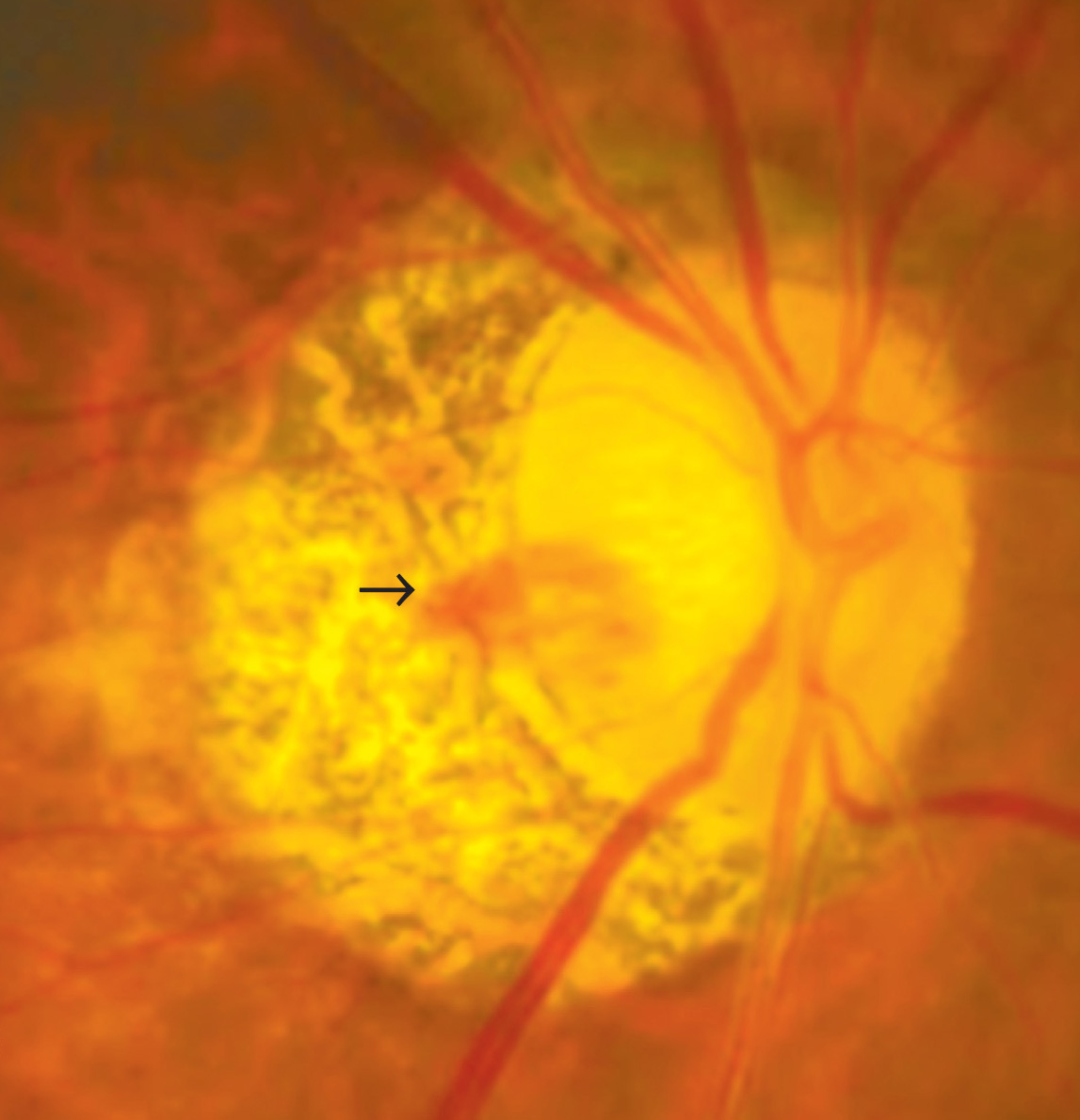 |
|
Optic disc hemorrhages are a manifestation of vascular dysregulation in glaucoma caused by shearing of blood vessels in the lamina cribrosa. They have long been associated with disease worsening. This research clarifies the special relevance of the optic cup in their pathogenesis and impact on glaucoma overall. Photo: Ozturker Z, et al. Canadian J Ophthalmol. 2017(52)6:583-591. Click image to enlarge. |
Optic disc hemorrhage (DH) has been well established as a substantial risk factor for development and progression of glaucoma. While it is categorized into two subgroups, peripapillary and cup-based, based on the location of its proximal component, the significance of this proximity remains unclear. Researchers based in South Korea investigated the association between disc hemorrhage location and primary open-angle glaucoma (POAG) progression for eyes followed up for over a decade. They found that showed glaucoma progression was higher in cases of classified as the cup type.1
In this longitudinal observational cohort study, which was published in JAMA Ophthalmology, 146 eyes of 146 patients at Seoul National University Hospital who had had one or more disc hemorrhage with at least five years of follow-up and had at least five reliable visual field examinations were included. The mean follow-up period was 10.9 years, the mean age at which DH was first detected was 55.1 years and 64.1% were women.
Over the mean follow-up period of 10.9 years, glaucoma progression was detected in 94 eyes (61.4%) with an MD change of -0.48dB per year. The cup-type group showed a faster rate of mean deviation (MD) change relative to the peripapillary-type group (-0.56db vs -0.32dB per year; difference = -0.24). The cup group showed a higher cumulative probability of progression of glaucoma (80.4%) relative to the peripapillary group (54.4%; difference = 26.0) in a life table analysis. The presence of cup hemorrhage was associated with an increased risk of glaucoma progression (hazard ratio: 3.28) in the multivariate Cox proportional hazard model. Cup-type disc hemorrhage was associated with MD loss rate in regression analysis.
“Our results showed that there was no difference between the peripapillary-type group and the non-disc hemorrhage group in terms of the percentage of glaucoma progressors and the rate of MD change,” the authors wrote in their paper. “This implies that the existence of peripapillary disc hemorrhage may not meaningfully influence the overall disease progression.”1
A commentary that was also published in JAMA Ophthalmology noted that “the findings of this study are important as they support both vascular dysregulation and mechanical shearing of blood vessels at the level of the lamina cribrosa as key mechanisms in disc hemorrhage pathogenesis.”2
Disc hemorrhages localized deep in the cup that were associated with faster disease progression support the notion that compressive optic neuropathy contributes to these findings. “We suggest that deep in the cup, the disc hemorrhage would put a stranglehold on the retinal nerve fibers, thus putting them between a proverbial rock (the blood) and a hard place (the underlying laminar),” the commentary authors wrote.
They suggested that eyecare professionals should ideally target their treatment of patients with POAG to minimize the recurrence of DHs regardless of the intraocular pressure (IOP) level, but short of keeping IOP as low as safely possible, such treatments are not yet available.2
1. Shin YI, Lee J, Jeong Y, et al. Proximal location of optic disc hemorrhage and glaucoma progression. JAMA Ophthalmol. September 5, 2024. [Epub ahead of print]. 2. Vercellin AV, Pasquale LR, Harris A. Disc hemorrhages in open-angle glaucoma—between a rock and a hard place. JAMA Ophthalmol. September 5, 2024. [Epub ahead of print]. |


